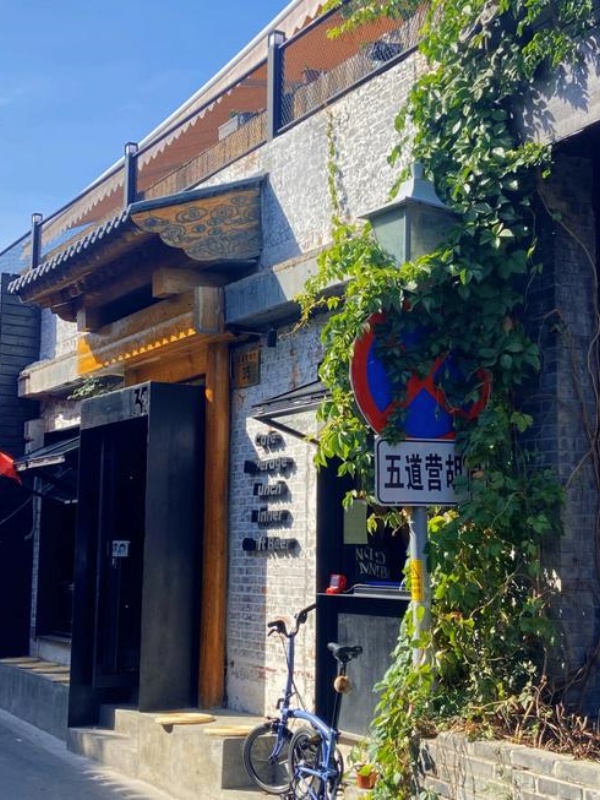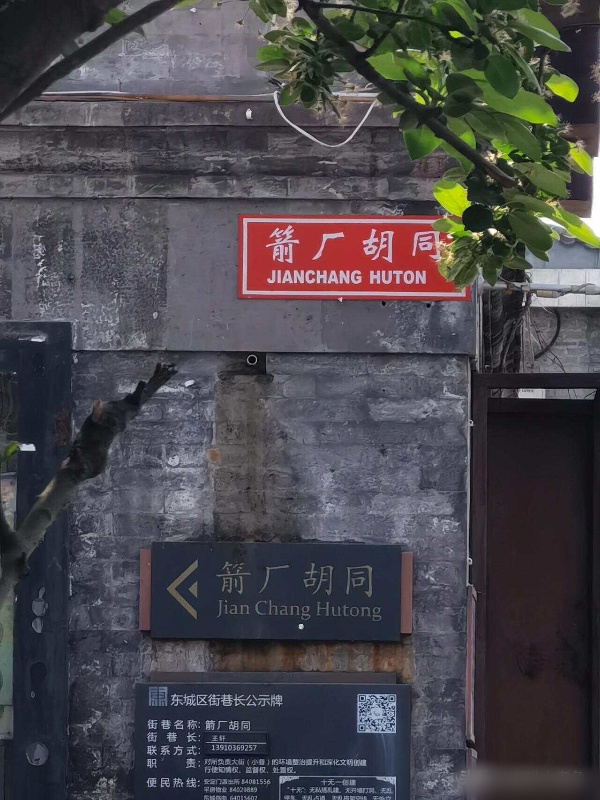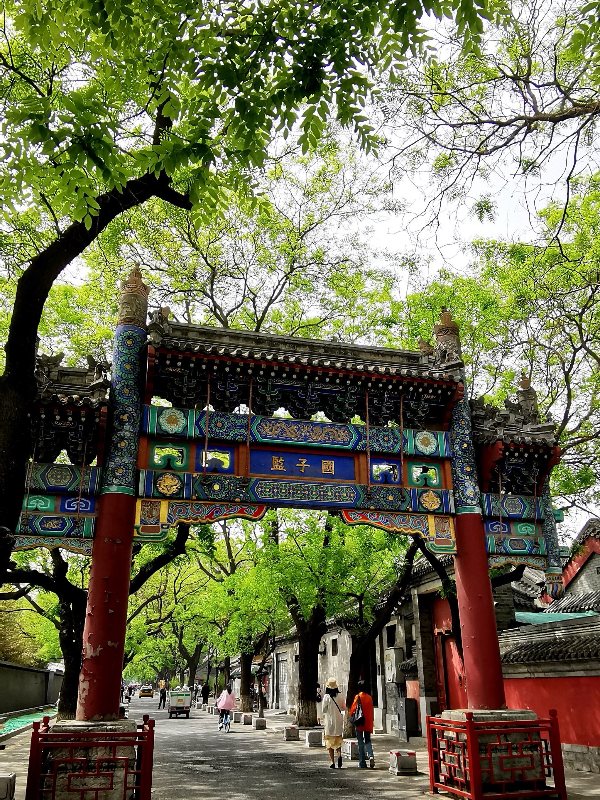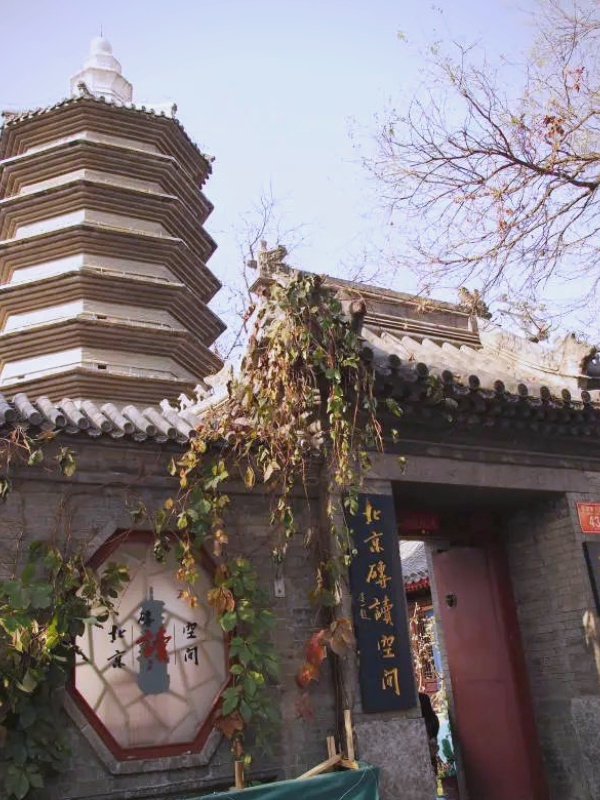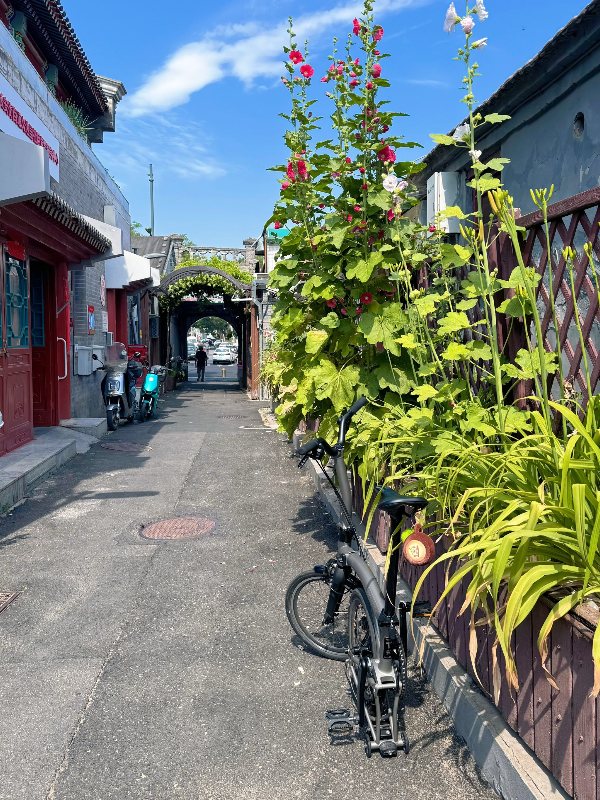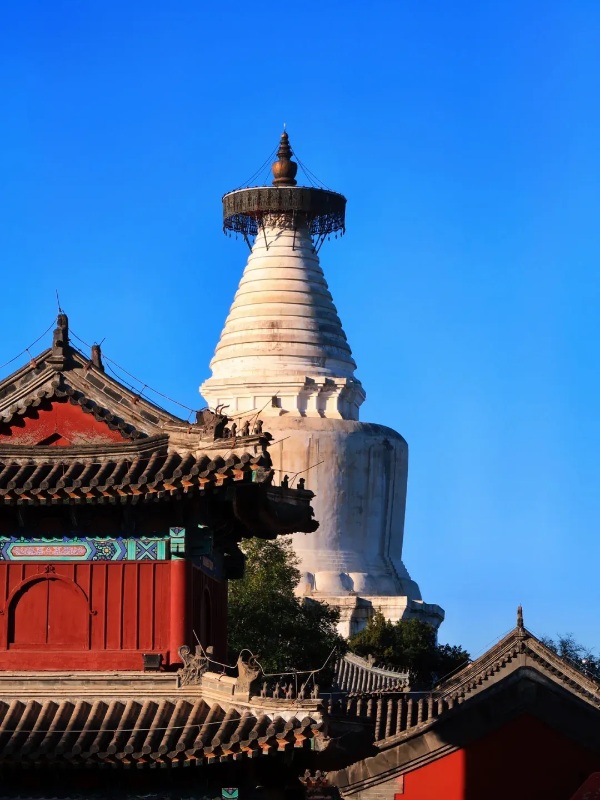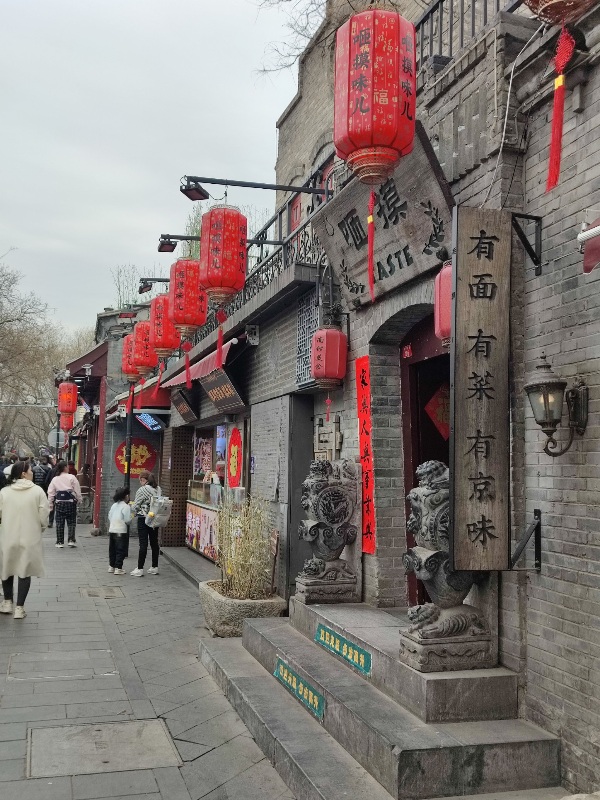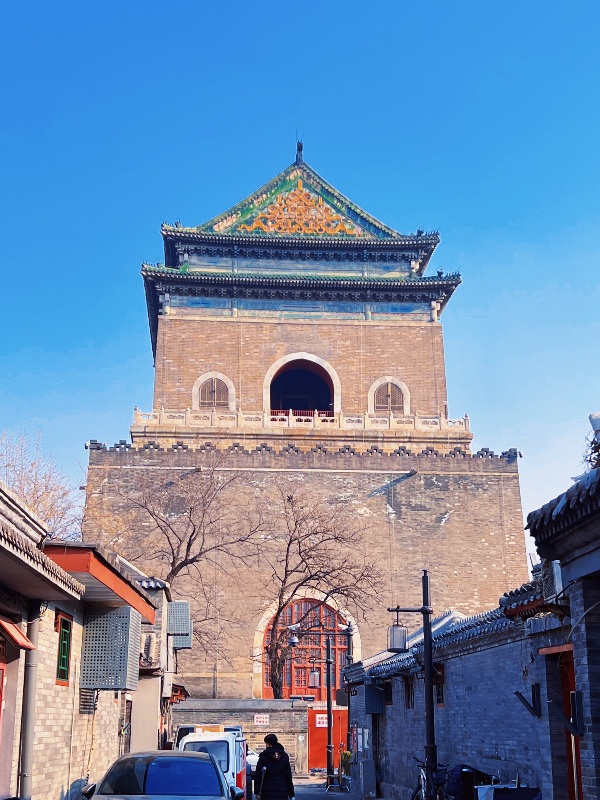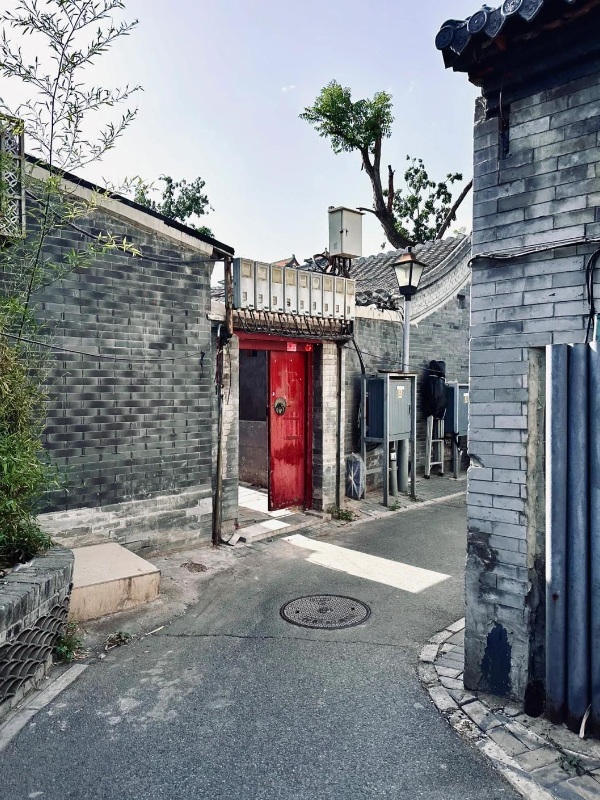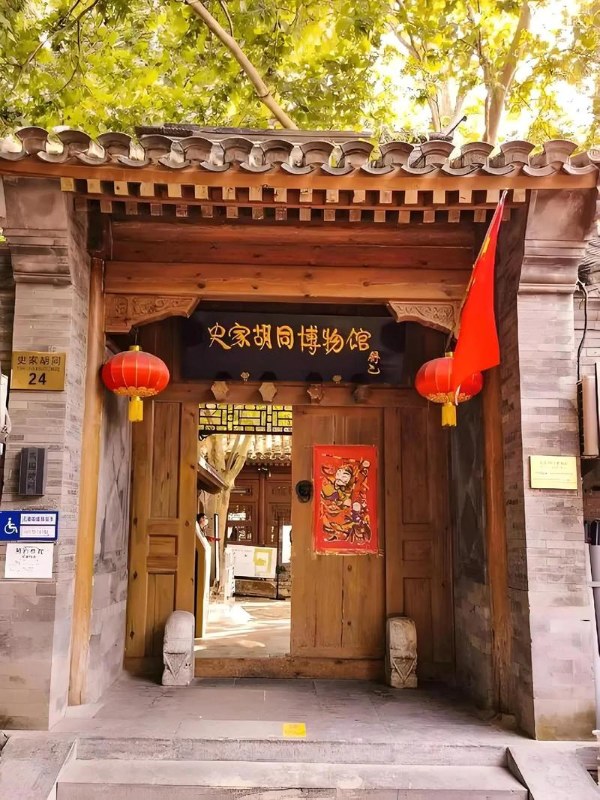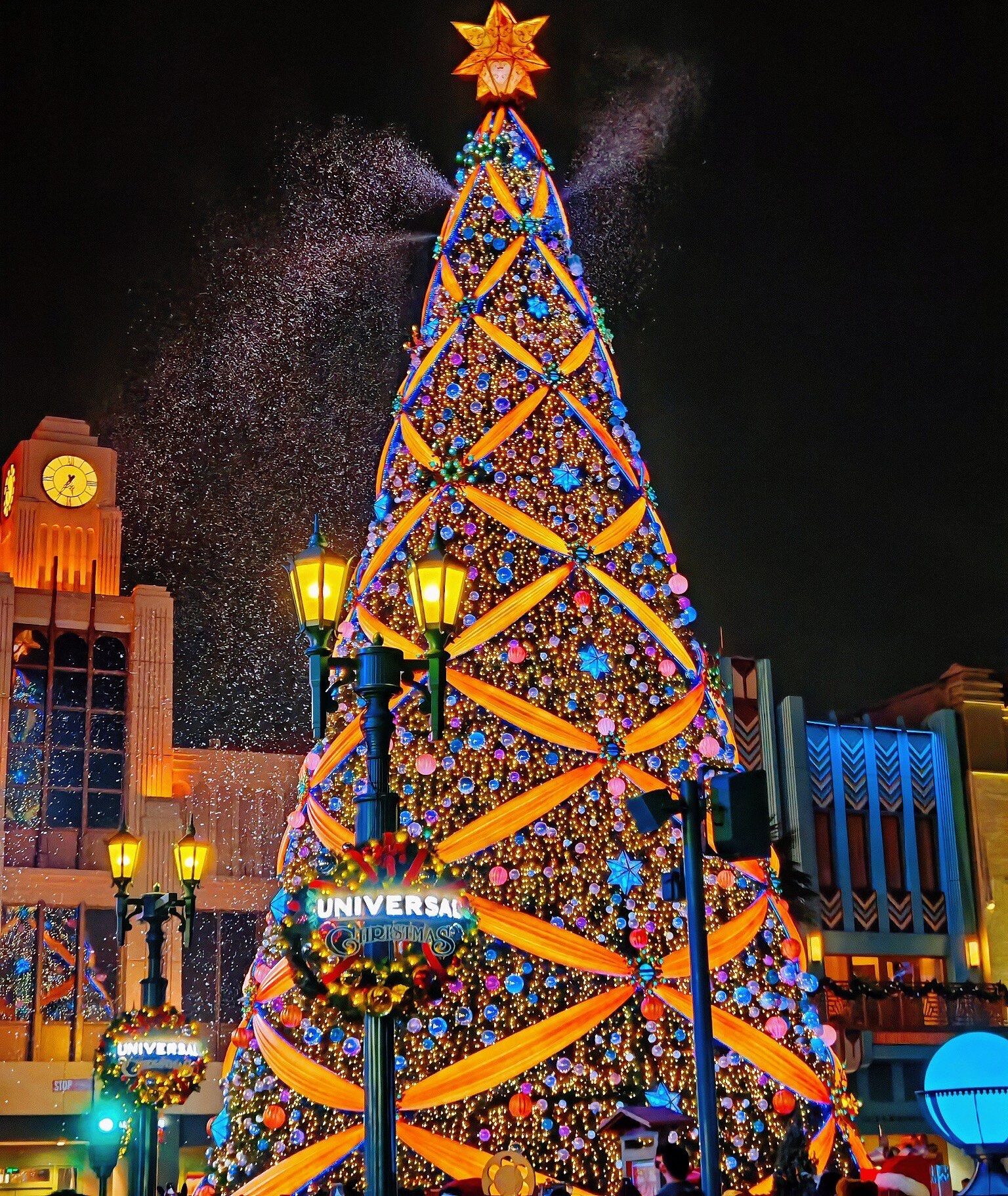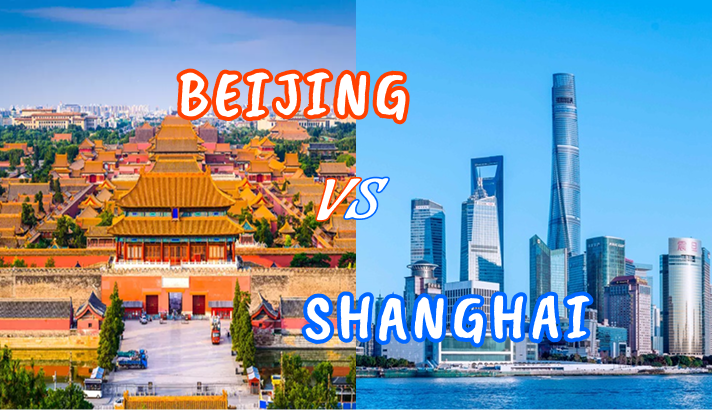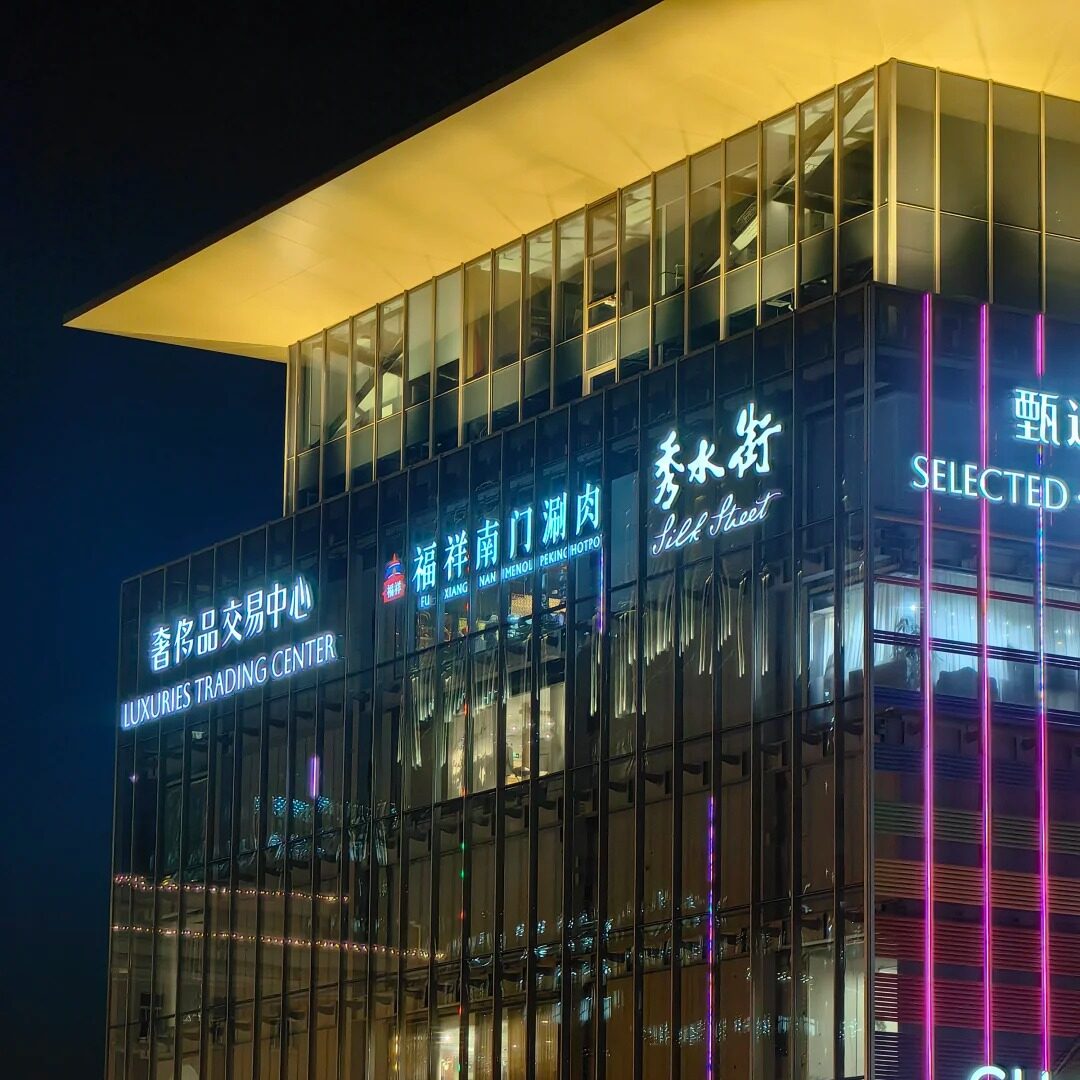Have you ever tried zooming in on Beijing on Google maps? The more you zoom in, the more you notice a grid of alleys that winds its way behind the Forbidden City with lines so fine they're almost gone. These are the Beijing hutongs: narrow lanes which still form China's heartbeat. The original layout of the Beijing hutong was like a chess board set up centuries ago, yet right now they are kept vibrant by bikes, laughter and the smell of deep-fried dough.
A Beijing hutong isn't just a street. At every turn you see a piece of history--grey-brick compounds, red-painted doors weathered by years of sun and rain, old men playing chess in the shade of elms. Here the city's past is not just something to look at; you walk around in it. Besides discovering what it is that makes these alleyways so distinct and walking directions to the best neighborhoods in the hú tong to see, with even some small tips for getting more out of your walk, in this guide you'll also Ready to enter the hidden rhythm of Beijing? Let’s start.
Why Does Beijing Hutong Still Feel So Alive Today?
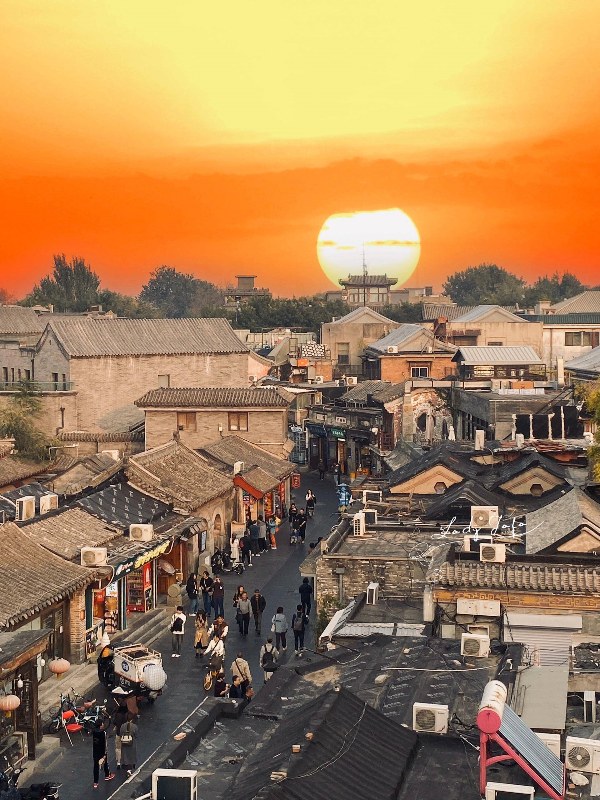
Beijing Hutong Overview
The Beijing Hutong Carries the City’s Old Pulse
Hutongs began in the Yuan Dynasty (1271–1368), where Kublai Khan's planners divided the city into parallel streets, lined on either side of a main boulevard. The word for "hutong" comes from Mongolian "huta," which means "well" and symbolizes shared spaces around which families built their lives. These narrow alleyways connected groups of siheyuan (courtyard homes), where several generations might live together in peace. During the Ming and Qing Dynasties, the number of hutongs grew continuously as communities expanded. Each alley was a thoroughfare for horses and oxen that doubled as a place where merchants hawked their wares, kids played barefoot in the road, and neighbors swapped gossip. Today, with scooters replacing horse carts and cafes standing in for old-fashioned tea houses, the spirit of communal living prevails at every turn.
The Hutongs Change, Yet Their Soul Remains
At the moment, more than 1,000 hutongs around the country are listed and protected by the government as a result of vigorous local protection campaigns. Walking along them, people can hardly avoid feeling the pull of ages old and brand-new: A shop selling hand-rolled dumplings lies next door to a craft beer bar with neon lights; a barista making lattes is located next to an outdoor bake oven. This duality is the very essence of Beijing—disorderly yet balanced. When night comes, the alleys spring to life: from window radios comes popular tunes, from old house windows comes the tinkle of dishes, from across the street come greetings that are shouted over. Hutongs cannot remain frozen in time, but neither should they. They thrive because people are still living in them, working in them, and working together. What makes hutongs feel so full of life and that hum of humanity is precisely what keeps them alive.
Route 1: Art & Coffee Hutongs – For Foodies & Creatives
- Wudaoying Hutong
- Jianchang Hutong
- Guozijian Street
This route feels like morning jazz mixed with temple bells. You walk through alleys where espresso meets incense smoke. Each turn hides a mural or a tiny café with a story. It’s a path for slow mornings, the kind where the air smells of beans and old wood. You’ll hear bicycle bells instead of traffic. Take your time; these streets reward patience. Somewhere between the walls, you start to feel the city’s heartbeat again.
Quick Info:
📍 Where: East of Yonghe Temple and near Andingmen area
🚇 How to Reach: Metro Line 2 – Stop: Yonghegong Lama Temple (Exit C) or Line 5 – Stop: Beixinqiao
⏰ Time to Spend Here: 3 to 4 hours
Stop 1: Yonghe Temple
As you enter, golden light spills across old tiles. The smell of incense curls around you, warm and sweet. Monks chant softly, their rhythm steady like breathing. Yonghe Temple is famous for its giant Maitreya Buddha carved from a single sandalwood tree — tall, fragrant, and serene. Come early, before crowds fill the courtyard, when even the air feels softer. You might notice how silence and sound overlap here — footsteps, murmurs, wind through leaves. Walk out slowly, and you’ll carry the calm with you.
Stop 2: Wudaoying Hutong
Here, roasted beans meet the scent of history. Cafés line the narrow lane, music floating from half-open doors. Wudaoying is known for blending old grey-brick siheyuan houses with modern art cafés, creating a creative yet nostalgic vibe. You can sit by a window, sip something floral, and watch locals walk their dogs. The sunlight bounces off the grey walls, and everything slows down for a bit. You’ll find pottery shops, vintage bikes, and maybe a place selling hand-drawn maps of the hutongs. Just keep walking and let the rhythm find you.
Stop 3: Jianchang Hutong
This street feels quieter, almost like a pause between thoughts. You might catch the smell of sandalwood from a nearby boutique or hear soft jazz from a tea shop. Jianchang Hutong stands out for its indie creative studios and minimalist tea bars tucked between traditional homes. A few doors still have the old-style nameplates in fading red paint. It’s short, but it leaves a trace. The kind of place you remember not for what you did, but for how it made you feel.
Stop 4: Guozijian Street
Past the gate, everything feels cooler. The red walls rise high, and the sound of your steps echoes faintly. Known as the home of China’s ancient Imperial Academy, Guozijian Street carries the fragrance of wisdom and ink. The Confucius Temple and the old Imperial College sit here like old friends sharing silence. You can sit under the gingko trees and read for a while. The light filters through their leaves like golden dust. When you leave, the calm lingers — quiet, respectful, almost sacred.
Ever wondered what life feels like inside old Beijing alleys? Dive into Discover the Charm of Beijing Hutongs: Your Ultimate Hutong Tour
Route 2: Historic & Literary Hutongs – For History Buffs
- Zhuanta Hutong
- Xisi Hutong
- White Pagoda Temple
If you like stories written in brick and ink, this route is for you. Every alley whispers something from the past — poems, politics, heartbreak, or laughter. The mood is slower here, the sound softer. It’s where the city’s memory hides in plain sight.
Quick Info:
📍 Where: West of the Forbidden City, near Fuchengmen and Xisi area
🚇 How to Reach: Metro Line 4 – Stop: Xisi or Line 2 – Stop: Fuchengmen
⏰ Time to Spend Here: 4 to 5 hours
Stop 1: Zhuanta Hutong
The air feels thick with old time. The Wansong Pagoda rises between homes, its surface worn but graceful. Zhuanta Hutong is known for the centuries-old pagoda that gives it its name, blending temple calm with neighborhood warmth. You might spot a tiny bookstore nearby with yellowing pages stacked to the ceiling. The owner just nods as you walk in. It smells of ink, paper, and dust — oddly comforting. This place doesn’t rush you; it asks you to linger.
Stop 2: Lu Xun Museum
The path is lined with trees whose shadows fall like lines from a poem. Inside the museum, Lu Xun’s desk still looks ready for another page. This museum anchors Fuchengmen’s literary district, preserving one of China’s boldest modern voices. You can almost hear the scratch of his pen. It’s quiet, not solemn — more like a conversation between generations. Step outside and you’ll feel that blend of nostalgia and quiet pride only old neighborhoods can offer.
Stop 3: Xisi Snack Street
Around noon, you’ll smell soy sauce and fried garlic. Locals eat standing up, barely talking, focused on the next bite. Xisi Hutong is famous for its traditional Beijing snacks and its unpretentious food stalls that have served locals for decades. You can try whatever catches your eye; this is not a place for fancy rules. The steam fogs your glasses, and laughter mixes with sizzling sounds. It’s messy, human, perfect.
Stop 4: White Pagoda Temple
You’ll see the pagoda peek above rooftops before you arrive. Its white curve shines against the blue sky, like a lantern in daylight. The White Pagoda Temple, built during the Yuan dynasty, stands as a symbol of peace amid modern rooftops. The temple yard feels peaceful, with bells echoing faintly. It’s a good place to end — still, ancient, and strangely alive.
Craving late-night dumplings in hidden alleys? Follow Explore Beijing Like a Local: Top Hutong Food Tours with Lost Plate
Route 3: Royal & Traditional Hutongs – For Culture Lovers
- Nanluoguxiang Hutong
- Bell and Drum Towers
These alleys once held princes and poets. The grandeur hasn’t gone; it’s just quieter now. Walk here and you’ll feel both elegance and wear — old trees, red doors, stone lions guarding memories. It’s Beijing at its most dignified.
Quick Info:
📍 Where: North of the Forbidden City, between Shichahai and Gulou area
🚇 How to Reach: Metro Line 6 – Stop: Nanluoguxiang or Line 8 – Stop: Shichahai
⏰ Time to Spend Here: 5 to 6 hours
Stop 1: Prince Gong’s Mansion
Through its gates, the world widens. The courtyards echo softly, each turn lined with wooden screens and painted beams. Prince Gong’s Mansion is one of Beijing’s most elaborate royal residences, known for its classic gardens and ornate halls. You might see tourists whisper, as if afraid to disturb the air. The pond reflects both sky and history — perfect symmetry. Every shadow here feels rehearsed by centuries.
Stop 2: Nanluoguxiang Hutong
Here, tradition meets noise and neon. The street hums with street snacks and laughter. Nanluoguxiang is one of the oldest and most famous hutongs, known for its lively mix of heritage, art, and youth culture. Kids chase each other around old wells while shopkeepers call out in Beijing slang. Between souvenir shops, there’s always a doorway leading to quiet — a reminder that peace and chaos coexist beautifully here.
If you like narrow alleys and late-night skewers, you’ll love Nanluoguxiang Guide 2025: Old Hutongs and Local Flavors in Beijing
Stop 3: Shichahai
By the water, the air cools. The sound of bicycle bells mixes with lake ripples. Shichahai stands out for its lakeside charm, offering reflections of willow trees and old courtyard roofs on calm water. You might stop at a teahouse and watch the reflection of willow trees sway. There’s no rush; time loosens its grip. When the sky turns gold, everything seems to float.
Stop 4: Bell and Drum Towers
You’ll hear the deep drum before you see the towers. The sound rolls through the square like thunder wrapped in velvet. These twin towers once kept Beijing’s official time, their rhythm marking centuries of life below. Climb the stairs and the city stretches beneath you. Up here, wind replaces noise, and the world feels simple again.
Route 4: Local Life Hutongs – For Slow Travelers
- Dongsi Hutongs
- Shijia Hutong Museum
Forget the landmarks for a moment. These streets show how people actually live — talking, cooking, laughing. The kind of life that doesn’t show up in guidebooks but stays in your memory.
Quick Info:
📍 Where: East of Dongsi and near Beixinqiao area
🚇 How to Reach: Metro Line 5 – Stop: Beixinqiao or Line 6 – Stop: Dongsi
⏰ Time to Spend Here: 3 to 4 hours
Stop 1: Dongsi Hutongs
The walls here are close, like old friends leaning in to whisper. Locals greet each other by name; shopkeepers sweep the front steps while chatting. Dongsi Hutongs are known for preserving the authentic grid layout of old Beijing, where traditional courtyard homes still stand side by side. You can peek into tiny groceries where the smell of sesame oil and old paper fills the air. Walk slowly — this is everyday poetry.
Stop 2: Shijia Hutong Museum
Inside, history feels personal. The rooms hold toys, radios, and photos from families who once lived here. The Shijia Hutong Museum is unique for chronicling community life rather than royal history, preserving the small joys of daily Beijing. English notes guide you through stories of warmth and resilience. You’ll hear recorded laughter of children, faint but full of life. It’s not about the exhibits — it’s about what they remember.
Stop 3: Beixinqiao Luzhu
This stop is for the brave-hearted. The smell hits before you see the sign — strong, peppery, and oddly inviting. Beixinqiao Luzhu is a legend among locals for its bold flavors and unapologetic authenticity. Locals eat in silence, savoring every bite. You might not love it, but you’ll remember it. That’s the charm of real Beijing: not perfection, but presence.
Think you’ve seen all of Beijing? Surprise yourself with Not Your Average Tourist: 4 Ways to Explore the Unusual in Beijing
How to Enjoy Beijing Hutong Cultural Tours? Don’t Miss These Experiences!
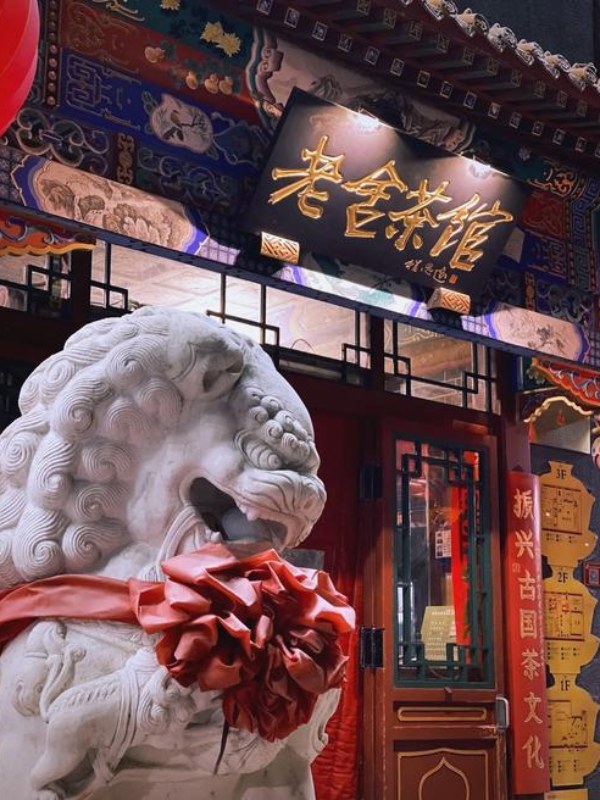
Lao She Teahouse
Feel Hutongs’ Cultural Roots — Intangible Heritage Workshops
Begin your exploration at Shijia Hutong Museum (No. 24 Shijia Hutong, Dongcheng District), where the entry fee is ¥20. The museum provides free English audio guides (available at the front desk with a passport deposit) for a deeper understanding of hutong history. Continue to nearby workshops like Hutong Craft Studio (a 5-minute walk from the museum) — they offer 90-minute hands-on lessons in paper cutting, sugar painting, or clay figurine making. Each session costs between ¥60–¥100, depending on the skill and materials used. These workshops take place in a restored traditional siheyuan, where you can chat with local artisans (most speak basic English) and feel the rhythm of old Beijing. Every handmade piece is yours to take as a small memory.
Nighttime Hutong Entertainment — Traditional Atmosphere-Filled Shows
In the evening, head to Lao She Teahouse (No. 3 Qianmen West Street, near Nanluoguxiang) to enjoy jasmine tea (¥15 per cup) and Peking Opera. Most 7:30–9:00 PM performances are priced between ¥80–¥150 per person, with front-row seats offering closer views of costumes. Alternatively, attend courtyard shows at Hutong Storytelling House (No. 18 Jianchang Hutong) — their 8:00–9:15 PM storytelling or cross-talk comedy shows typically cost ¥50–¥100. The laughter, tea fragrance, and melodic voices make the experience deeply immersive. Note: Cross-talk has English subtitles projected on screens, so international visitors can follow along easily.
Hutong Food Exploration — Two Practical Options
A 3-hour guided hutong food tour by Beijing Local Bites costs around ¥300, covering five to six authentic eateries — including a 60-year-old jianbing stall (¥8 per crepe) and a family-run noodle shop (handmade noodles with soy sauce, ¥18). Guides speak fluent English and share stories behind each dish. If you’d rather explore solo, rent a bicycle from Mobike (via the app, ¥50 per day, no deposit with an international credit card). Ride through lanes like Yangmeizhu Xiejie or Liulichang — by 5:30–6:30 PM, the sunset colors the bricks gold. The aroma of sesame oil from local food stalls will guide you forward; look for signs with “English Menu” if you need it. This journey is more than sightseeing — it becomes a sensory memory.
Practical Tips for Your Beijing Hutong Art & Coffee Route
Getting Around and Staying Comfortable
Start early and wear comfy walking shoes. Hutong alleys can twist and turn quickly. Some roads are narrow and uneven, so take your time. Carry small cash or a digital wallet like Alipay for café payments. Use the Yitongxing app to check metro routes or grab a shared bike nearby. Always stay hydrated and take breaks at small teahouses when the sun gets too strong.
Respecting Culture and Local Life
Remember, these hutongs are home to real people. Greet locals with a smile and ask before taking photos. Avoid entering private courtyards unless it’s a public space. Keep your voice low to respect the calm atmosphere. Art stores often showcase handmade crafts—don’t touch items unless you plan to buy them. Enjoy conversations with artists, but avoid bargaining too aggressively. This keeps the cultural exchange warm and friendly.
Safety, Weather, and Smart Spending
Keep your belongings close, especially in busy cafés or crowded alleys. Skip unlicensed rickshaw tours that might overcharge. Always check prices before ordering food or coffee. Beijing weather changes fast—bring sunscreen in summer and layers in spring or fall. In winter, gloves help when holding your warm latte. Check the forecast before heading out, and you’ll enjoy each hutong moment with no stress.
FAQs About Beijing Hutong Cultural Experiences
Q: What’s the best way to explore beijing hutong for first-timers?
Walk or cycle. You’ll catch street scents and sounds that cars miss. Apps like Baidu Maps work offline. Renting a bike costs around ¥50 per day, which is perfect for covering more ground without rushing. You can also join a local walking tour to learn hidden stories. Many guides share small cultural facts that make each alley come alive.
Q: Are workshops in beijing hutong open to foreigners?
Most are! Paper-cutting and calligraphy studios welcome tourists, and instructors usually know basic English. Booking ahead helps, especially on weekends. Prices average ¥80–¥100, depending on the craft and materials. Some workshops even include tea breaks or small souvenirs. It’s a great way to meet locals and take home something you made.
Q: Can I use Alipay or WeChat Pay in the beijing hutong?
Yes, nearly every shop and café accepts them. If you’re a foreign traveler, register for Alipay Tour Card or WeChat Wallet for Foreigners. Cash is still handy for smaller stalls under ¥20. Always ensure your phone has data before heading out. For offline use, save QR codes for payments and directions.
Q: Are the hutongs crowded all year round?
It depends on the season. Summer brings tourists, while winter offers quiet alleys and fewer crowds. Locals say late autumn (October–November) feels most authentic and photogenic. Morning hours are calmer, with fewer visitors and better light. If you want vibrant street life, go around lunchtime.
Q: Do beijing hutong cafés serve Western coffee?
Definitely. Cafés like Soloist and Metal Hands serve espresso, cappuccino, and oat milk lattes priced ¥35–¥50. You’ll also find teas and pastries inspired by Beijing flavors. Some cafés feature local art exhibits or vinyl playlists. It’s easy to spend an afternoon people-watching here.
Q: How do I find traditional shows inside beijing hutong?
Check platforms like Trip.com or Dianping for listings. Look for keywords like "Teahouse Opera" or "Cross-talk Beijing." Shows usually run between ¥80–¥150, and seating is intimate. Try booking a front-row seat for a closer view of costumes and expressions. Performers often interact with the audience, adding fun surprises.
Q: Can I join food tours in English?
Yes. Trip.com, Lost Plate, and local Airbnb Experiences offer English-speaking guides. Tours cost ¥250–¥350 and include 5–7 tasting stops in hidden lanes. Ask your guide about vegetarian or halal-friendly options. Many tours also include dessert stops for a sweet finish.
Q: Are public restrooms available along beijing hutong?
Yes, small public restrooms are marked with Chinese and English signs. Carry tissues and sanitizer, as amenities vary. Most are free or cost less than ¥2. You’ll find cleaner ones near major hutongs like Nanluoguxiang. Some cafés also let customers use their facilities if you buy a drink.
Q: What’s the best time for photos?
Early morning or sunset. Golden light hits the gray bricks beautifully. Midday sun can be harsh, especially during summer months. Morning fog adds a dreamy touch in winter. Even rainy days create shiny reflections that look stunning on camera.
Q: Are night walks safe in beijing hutong?
Yes, generally safe. Locals stay outdoors late, and alleys are well-lit. Still, avoid very quiet areas after 11 PM and keep valuables secure just in case. Solo travelers should stick to main routes like Wudaoying. Street vendors often stay open, keeping the area lively and friendly.
